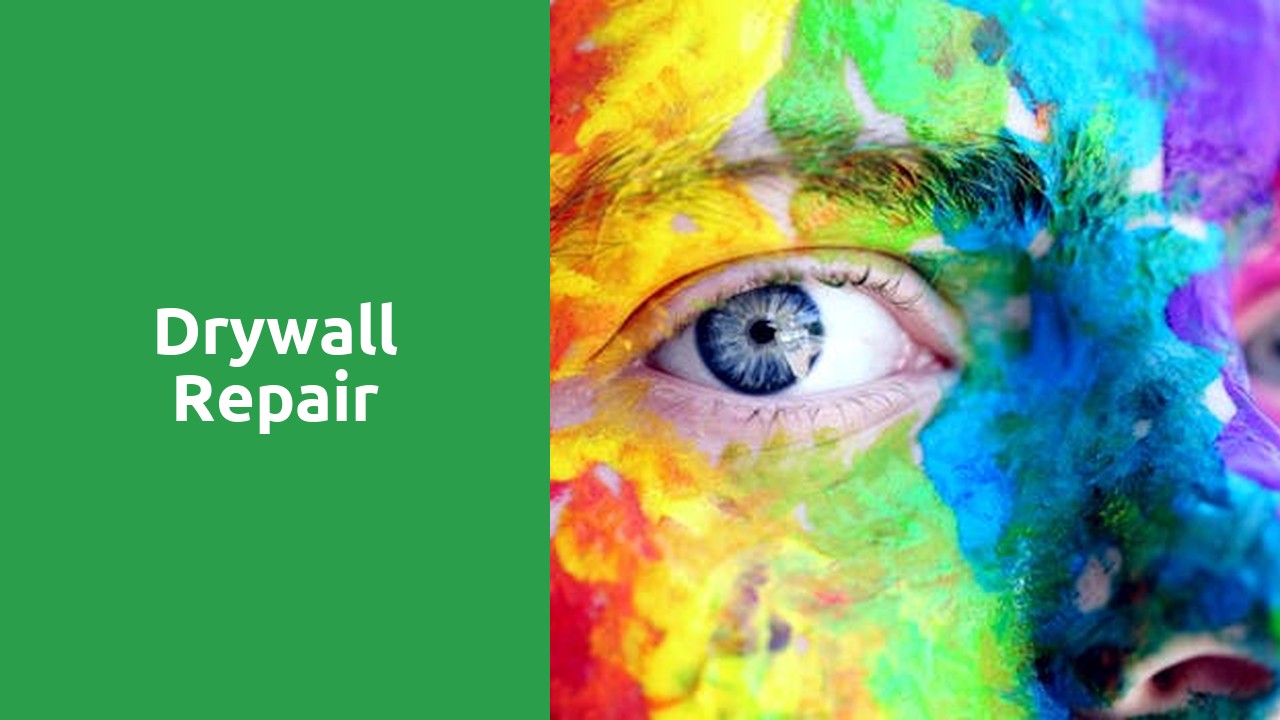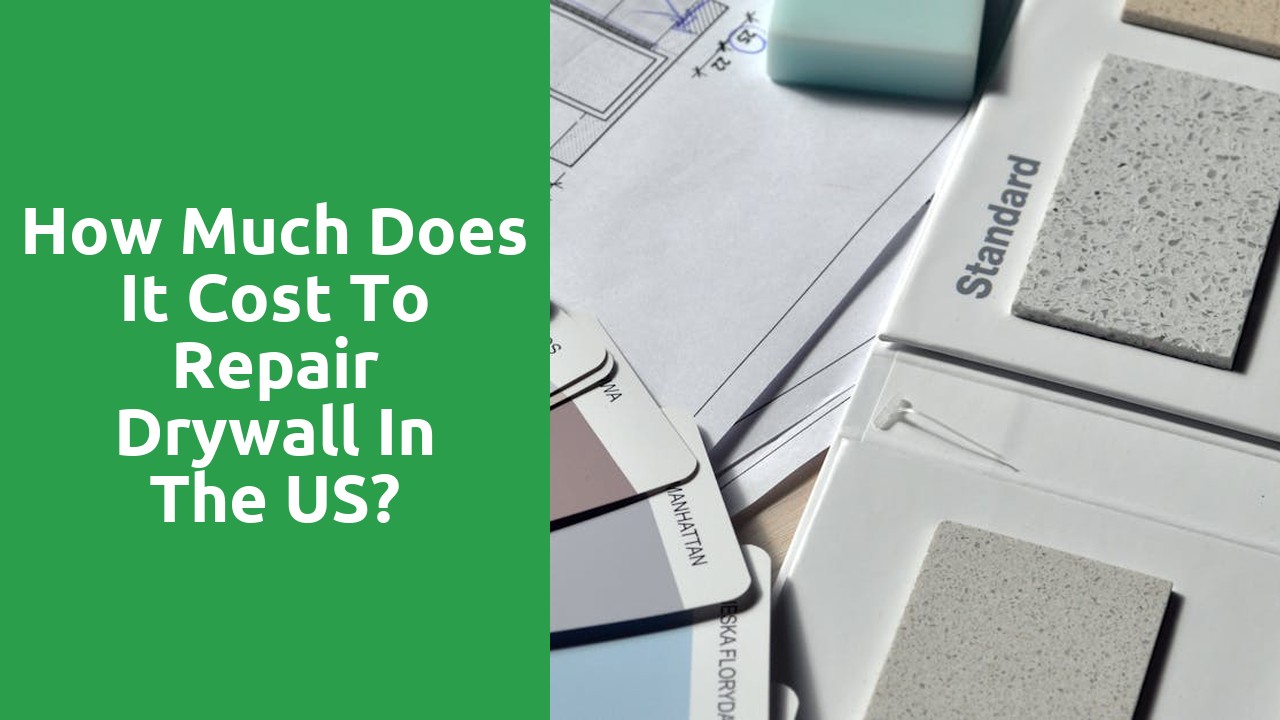
Table Of Contents
Drywall Finishing Techniques
Drywall finishing techniques play a crucial role in ensuring a seamless and professional-looking repair job. When tackling a drywall repair project at home, it's essential to familiarize yourself with the various techniques to achieve a smooth and flawless finish. Whether you are dealing with minor dents or larger holes, mastering the art of drywall finishing can elevate the overall appearance of your space.
In Cypress, Texas, homeowners often turn to DIY methods for drywall repair to save time and money. By understanding and implementing the appropriate finishing techniques, individuals can effectively transform damaged walls into pristine surfaces. Utilizing joint compound, sandpaper, and a putty knife are among the key tools needed for successful repairs. Drywall finishing techniques are not just about concealing imperfections; they are about restoring the aesthetics and functionality of a space.
Achieving a Smooth Finish
To achieve a smooth finish when repairing drywall, it is essential to start by properly preparing the damaged area. Begin by sanding down any rough edges and removing excess debris. Then, apply a thin layer of joint compound over the repaired section using a trowel or putty knife. Smooth out the compound evenly, feathering the edges to blend it seamlessly with the surrounding wall. Allow the compound to dry completely before sanding it down gently to create a smooth and even surface. Repeat this process as needed until the repaired area is flush with the rest of the wall. For expert drywall repair in The Woodlands, Texas, consider seeking professional assistance to ensure a flawless finish that seamlessly integrates with your existing wall.
Once the joint compound has dried and been sanded, it's time to prime and paint the repaired area. Choose a high-quality primer to seal the surface and ensure proper adhesion for the paint. Apply the primer evenly over the repaired section and let it dry according to the manufacturer's instructions. When selecting paint, opt for the same color and finish as the existing wall to achieve a cohesive look. Use a paint roller to apply the paint evenly over the primed area, blending it with the surrounding wall for a seamless finish. Allow the paint to dry completely before inspecting the repaired section to ensure a smooth and flawless result. For pristine drywall repair in The Woodlands, Texas, consider enlisting the help of professionals to guarantee a professional finish.
Painting Over Repaired Drywall
When painting over repaired drywall, it is crucial to ensure that the repaired areas blend seamlessly with the existing surface. Begin by priming the repaired sections to create a uniform surface for painting. This step helps to prevent the repaired areas from absorbing more paint than the surrounding wall, resulting in a patchy appearance. Especially when dealing with repairs from Drywall Repair in The Woodlands, Texas, applying a high-quality primer is essential to achieving a professional finish.
After priming, carefully select a paint color that matches the existing wall color. It may be necessary to blend different shades to create a seamless transition between the repaired and original areas. Be sure to apply thin, even coats of paint to the entire wall, paying particular attention to the repaired sections. By taking these steps, you can effectively camouflage the repairs and achieve a flawless finish when painting over repaired drywall, ensuring that your walls look as good as new.
Blending in the New with the Old
When it comes to blending new drywall with existing walls, attention to detail is crucial for achieving a seamless finish. Start by ensuring that the new drywall is the same thickness as the old one to avoid any noticeable differences once painted. Use the same type of joint compound and apply it evenly to both the new and old sections to create a uniform surface. Additionally, blending the texture of the repair with the surrounding area is essential to make sure that the patchwork is indistinguishable from the rest of the wall. For instance, if the existing wall has a smooth finish, aim to replicate that on the repaired section as well.
In the context of Drywall Repair in Texas, factors like humidity and temperature can affect the drying time of joint compound and paint. Take these climate-related nuances into account when working on your drywall repair project. It might be beneficial to prime the repaired area first before applying the final coat of paint, as this can help in achieving a consistent color and texture across the entire wall. By following these steps and paying attention to the smallest details, you can successfully blend in new drywall with the old, leaving your walls looking as good as new.
Safety Precautions for Drywall Repair
When tackling drywall repair in The Woodlands, Texas, it's crucial to prioritize safety precautions to avoid any mishaps during the process. One important consideration is to make sure you have the appropriate safety gear on hand before starting any repair work. This includes wearing safety goggles to protect your eyes from dust and debris, as well as gloves to shield your hands from sharp edges and splinters.
Additionally, remember to work in a well-ventilated area to prevent the buildup of harmful dust particles while you're sanding or cutting drywall. It's also advisable to wear a mask to avoid inhaling these particles, which can cause respiratory issues. By taking these safety measures seriously, you can ensure that your drywall repair project in The Woodlands, Texas, is not only successful but also safe for you and your surroundings.
Protecting Yourself and Your Space
Drywall repair in Texas, or anywhere for that matter, can expose you to certain risks, so it's crucial to prioritize safety measures. Always wear a dust mask to prevent inhaling harmful particles, especially when sanding down the drywall. Additionally, protect your hands with work gloves to shield them from sharp edges or drywall materials that may cause irritation.
Furthermore, it's imperative to keep your work area well-ventilated by opening windows or using fans. This helps disperse any dust or fumes that may arise during the repair process. Lastly, consider wearing safety goggles to safeguard your eyes against debris and chemicals. By taking these precautions, you can ensure that your DIY drywall repair project in Texas goes smoothly and safely.
FAQS
Can I repair small holes in drywall myself?
Yes, repairing small holes in drywall is a relatively simple DIY task that can be done with some spackling compound and a putty knife.
What tools will I need to repair drywall myself?
To repair drywall yourself, you will need basic tools such as a putty knife, sandpaper, spackling compound, a drywall saw, and a paintbrush for touch-ups.
Is it necessary to sand the repaired drywall?
Yes, sanding the repaired drywall is essential to achieve a smooth finish. It helps to blend the repaired area seamlessly with the rest of the wall.
Can I paint over the repaired drywall?
Yes, once the repaired drywall has been sanded and primed, you can paint over it to match the existing wall color.
What safety precautions should I take when repairing drywall myself?
When repairing drywall yourself, it is important to wear safety goggles, a dust mask, and gloves to protect yourself from dust and chemicals. Additionally, ensure proper ventilation in the work area.


